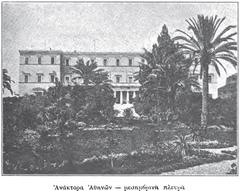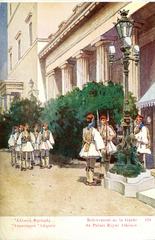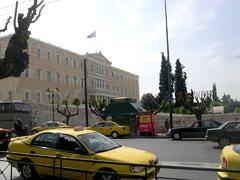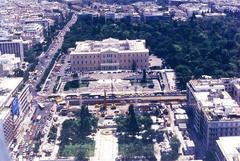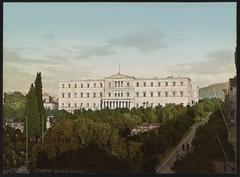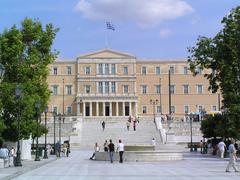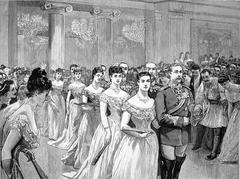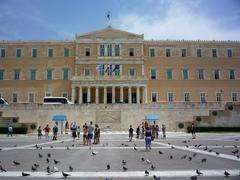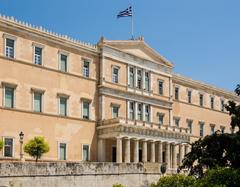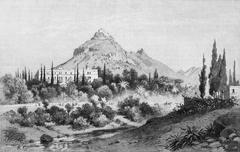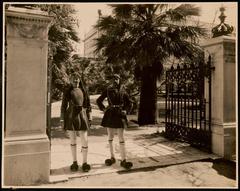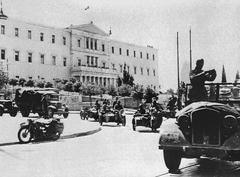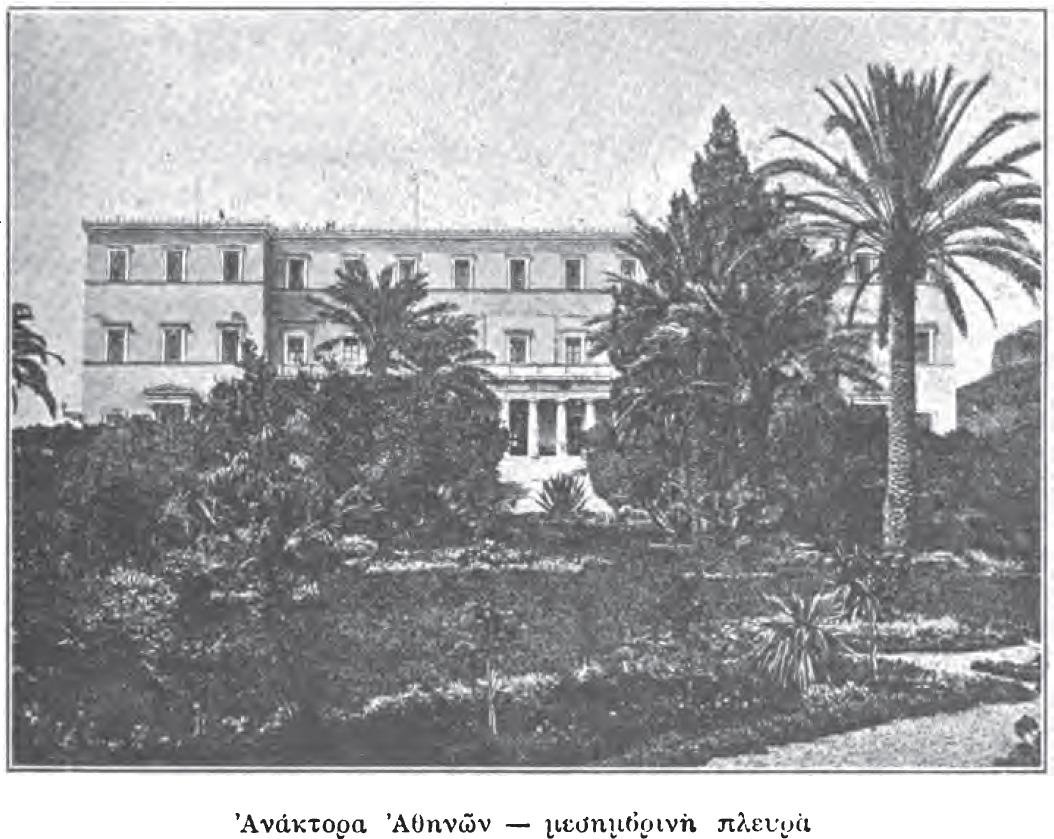
Old Royal Palace Athens: Visiting Hours, Tickets, and Historical Sites Guide
Date: 14/06/2025
Introduction
Standing proudly on Athens’ historic Syntagma Square, the Old Royal Palace is a compelling symbol of Greece’s national identity, political transformation, and architectural heritage. Originally built for King Otto I between 1836 and 1843, the palace’s neoclassical design reflects Greece’s desire to honor its ancient past while forging a modern state. While its days as a royal residence ended more than a century ago, the building has played a central role in Greek public life ever since, most notably as the seat of the Hellenic Parliament since 1929. This comprehensive guide covers the palace’s history, architecture, visitor information—including hours, ticketing, accessibility—cultural significance, and nearby attractions to help you make the most of your Athens experience (Old Royal Palace Athens: Visiting Hours, Tickets & Historical Insights, TravelCurious, Wanderlog).
Table of Contents
- Introduction
- Origins and Construction
- Architectural Significance
- Role as Royal Residence
- Transition to Parliamentary Seat
- The Palace in Modern Athens
- Visitor Information: Hours, Tickets & Accessibility
- Cultural Importance and Ceremonies
- Preservation and Visitor Experience
- Frequently Asked Questions (FAQ)
- Key Dates and Facts
- Practical Visitor Tips
- Nearby Attractions
- Conclusion & Call to Action
- References
Origins and Construction
After Athens was declared the capital of the newly independent Greek state in 1834, King Otto I commissioned the construction of a royal palace to reflect the nation’s aspirations. Designed by Bavarian architect Friedrich von Gärtner and funded by King Ludwig I of Bavaria, the palace’s construction spanned from 1836 to 1843. Its location on Syntagma Square and neoclassical design were intended to reinforce Greece’s links to its classical heritage and emerging democratic ideals.
Architectural Significance
The Old Royal Palace is an exemplary work of neoclassical architecture, inspired by ancient Greek principles of symmetry and proportion. The building features grand Ionic columns, a stately marble portico, and a restrained yet elegant façade. Local limestone and marble were used throughout. The palace’s urban placement creates a monumental axis in the heart of Athens, facing the National Gardens and aligning with major city routes (TravelCurious).
Inside, the original layout included grand halls and private royal apartments adorned with high ceilings, decorative plasterwork, marble staircases, and gilded mirrors. Though many interiors have been adapted for parliamentary use, several historic features remain intact.
The palace also set a precedent for Greek public architecture, influencing the design of other major neoclassical buildings such as the National Library, University of Athens, and Academy of Athens.
Role as Royal Residence
From 1843 to 1910, the palace served as the residence for the Greek royal family, hosting ceremonies and state events. A fire in 1909 prompted the royal family to move to the Crown Prince’s Palace, ending the building’s function as a royal home.
Transition to Parliamentary Seat
Following the abolition of the monarchy in 1924, the palace was repurposed for various governmental uses. It briefly served as a hospital and a refuge for refugees before being designated as the permanent seat of the Hellenic Parliament in 1929. The building underwent renovations to accommodate parliamentary functions while retaining its neoclassical character. The first Senate convened here in 1934, and the palace has remained the center of Greek political life ever since (Accidentally Wes Anderson).
The Old Royal Palace in Modern Athens
Today, the palace houses the Hellenic Parliament, offices, meeting rooms, and administrative services. Its prominent location on Syntagma Square makes it a focal point for national celebrations, political demonstrations, and public gatherings. The Monument to the Unknown Soldier was added to the west side, further cementing the site’s national significance (Misstourist).
Visitor Information: Hours, Tickets & Accessibility
Visiting Hours & Entry
- Exterior & Monument Grounds: Open year-round and accessible at all times.
- Interior Access: The palace interior is generally closed to the public due to its governmental role. Special guided tours are occasionally available during parliamentary recesses or national holidays, often for educational or pre-arranged groups.
- Changing of the Guard Ceremony: Takes place every hour at the Monument to the Unknown Soldier, with a more elaborate ceremony on Sundays at 11:00 AM (Make a Bucket List).
- Tickets: No tickets are needed to view the exterior or attend the guard ceremony. For any special guided tours inside, tickets may be required and should be reserved in advance via the official Hellenic Parliament website.
- Accessibility: Syntagma Square and the palace’s surroundings are wheelchair accessible, with ramps and smooth pathways. The adjacent Syntagma Metro station and multiple bus/tram lines provide excellent public transport links (Make a Bucket List).
Cultural Importance and Ceremonies
The Old Royal Palace is more than an architectural gem; it is a symbol of Greece’s political evolution and enduring democratic values. The daily Changing of the Guard ceremony by the Evzones at the Tomb of the Unknown Soldier is a highlight for visitors, offering a unique blend of military tradition and national pride (The Crazy Tourist). The palace’s role as the epicenter of political life is underscored during national events and public demonstrations on Syntagma Square (Dave’s Travel Pages).
Preservation and Visitor Experience
Ongoing conservation efforts protect the palace’s neoclassical features and historical integrity. While interior access is limited, visitors can experience the grandeur of the façade, the ceremonial guard change, and the tranquil National Garden directly behind the palace. Interactive displays, images, and maps are available on tourism websites and apps to enhance your understanding.
Frequently Asked Questions (FAQ)
Q: What are the Old Royal Palace visiting hours?
A: The exterior and grounds are open year-round, 24/7. The interior is not generally open, except for special guided tours.
Q: Is there an entrance fee or ticket required?
A: No ticket is needed for the exterior or guard ceremony. Interior tours, when available, must be booked in advance, typically free or for a symbolic fee.
Q: How do I get to the Old Royal Palace?
A: The palace is located on Syntagma Square, accessible via Syntagma Metro station (Lines 2 & 3), buses, and trams.
Q: When is the Changing of the Guard ceremony?
A: Every hour, with the main ceremony on Sunday at 11:00 AM.
Q: Are there guided tours inside the Old Royal Palace?
A: Rarely and only by prior arrangement, primarily for educational or official groups. Check the official website for announcements.
Key Dates and Facts
- 1834: Athens is named Greece’s capital.
- 1836–1843: Palace constructed for King Otto I.
- 1843–1910: Served as royal residence.
- 1910–1929: Used for government offices, hospital, and refugee shelter.
- 1929: Became seat of the Hellenic Parliament.
- 1934: First Senate session in the palace.
- Present: Functions as the Greek Parliament building.
Practical Visitor Tips
- Best Time to Visit: Late spring (April–June) or early autumn (September–October) for mild weather and lighter crowds.
- Dress & Etiquette: Modest, comfortable clothing is recommended. Respect the guards and ceremonies by keeping a reasonable distance and not obstructing their movements (The Invisible Tourist).
- Safety: Syntagma Square is well-patrolled, but be vigilant for pickpockets. Watch for traffic when crossing streets.
- Photography: Permitted outdoors; interior photography is only allowed if part of an authorized tour.
Nearby Attractions
- National Garden of Athens: Behind the palace, offering shaded paths, ponds, and botanical displays.
- Plaka & Monastiraki: Historic neighborhoods with traditional tavernas, markets, and charming streets.
- Benaki Museum, Acropolis, Temple of Olympian Zeus: All within walking distance for deeper exploration of Athens’ heritage.
Conclusion & Call to Action
The Old Royal Palace is a must-visit for anyone interested in Greek history, architecture, or politics. Even without access to the interior, the palace’s grandeur, the evocative Changing of the Guard, and its location at the heart of Athens provide a memorable cultural experience.
Plan your visit today! For the latest updates on visiting hours, tickets, and special events, check the official Hellenic Parliament website. Download the Audiala app for interactive guides, tour alerts, and insider tips on Athens’ historical sites. Stay connected with us on social media for up-to-date news and exclusive offers.
References
- Old Royal Palace Athens: Visiting Hours, Tickets & Historical Insights
- Old Royal Palace Athens: Visiting Hours, Tickets, and Architectural Highlights
- Visiting the Old Royal Palace in Athens: History, Tickets, Hours & Nearby Attractions
- Old Royal Palace Visiting Hours, Tickets & Guide to Athens Historical Sites
- Accidentally Wes Anderson: Hellenic Parliament
- Misstourist: Where to Stay in Athens
- The Crazy Tourist: 25 Best Things to Do in Athens
- Dave’s Travel Pages: Athens Travel Tips
- The Invisible Tourist: Athens Travel Tips
